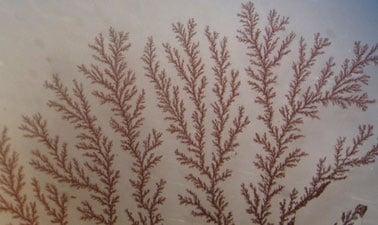MOOC List is learner-supported. When you buy through links on our site, we may earn an affiliate commission.

MOOC List is learner-supported. When you buy through links on our site, we may earn an affiliate commission.
This series introduces various kinetic phenomena in various classes of materials. The course explains how materials develop different microstructure based on different processing techniques, and it relates these microstructures to the properties of the material.
Microstructural Evolution of Materials is intended for engineering and science students and professionals with an interest in materials statistics, kinetics, and microstructural transformations.
Part 1 of the course will introduce important concepts in statistical mechanics that are especially relevant to materials scientists. Topics include solid solutions, the canonical ensemble and heat capacity.
Part 2 of the course focuses on point defect evolution, including diffusion, substitutional diffusion, ionic defects, and ionic conductivity.
Part 3 of the course discusses surfaces and surface-driven reactions. Topics include surface energy, faceted and non-faceted growth, and growth and ripening.
Part 4 of the course focuses on phase transformations, including nucleation and growth, precipitate growth, interface stability, and glass transition.
Prerequisites:
- Parts 1-3 of Microstructural Evolution of Materials (Microstructural Evolution of Materials Part 1: Statistical Mechanics; Microstructural Evolution of Materials Part 2: Defects and Diffusion and Microstructural Evolution of Materials Part 3: Surfaces & Surface-Driven Reactions )
- University-level Calculus
- Structure of Materials (Ideally, 3.012Sx: Structure of Materials)
- Thermodynamics (ideally, 3.012Tx: Thermodynamics of Materials)
What you'll learn
- Learn why crystal nuclei form
- Discover how nanowires are formed using vapor-liquid-solid growth
- Understand the kinetics of precipitate growth from a binary solution
- Learn the conditions that trigger dendritic growth from a melt
Syllabus
Homogeneous Nucleation:
The Thermodynamics of Phase Transformation
An Introduction to Homogeneous Nucleation
Vapor-Liquid Nucleation of Water
Homogeneous Nucleation Rate
Experimental Measurements of Nucleation Rate
Heterogeneous Nucleation:
An Introduction to Heterogeneous Nucleation
The Phase Transformation of Water
Real-World Nucleation Examples
Precipitate Growth:
An Introduction to Precipitate Growth
Continuous Growth
Growth Rate Dependence on Supercooling
Impact of Supercooling on Nucleation and Growth
2D Nucleation on Faceted Surfaces
Screw Dislocation Assisted Growth on Facets
Precipitate Growth from a Binary System
Interfaces:
Interface Stability Criterion
Bridgeman-Stockbarger Crystal Growth
Constitutional Supercooling
MOOC List is learner-supported. When you buy through links on our site, we may earn an affiliate commission.
MOOC List is learner-supported. When you buy through links on our site, we may earn an affiliate commission.
